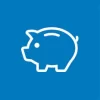A number of Swiss banks already offer euro-based and dollar-based savings accounts in addition to regular accounts in Swiss francs.
As China’s presence on the world stage grows and its currency strengthens, it is not surprising that an increasing number of savings vehicles are being created to take advantage of this change. When the Chinese money unit, the yuan, is spoken of as a currency rather than as actual cash, it is referred to as “renminbi” (this can be a mouthful for those who don’t speak Chinese).
The Banque Cantonale de Genève BCGE is breaking new ground by launching the first yuan savings account on July 3, 2015. With this new product, the bank is extending its CHF, EUR and USD savings account offers.
Interest yield rates of 2% far outdo those delivered by Swiss savings accounts in Swiss francs, euro and U.S. dollars, as an unbiased savings account comparison shows.
“If the trend keeps up, we will integrate yuan accounts into our independent account comparison in addition to Swiss-franc, U.S. dollar and euro accounts” says moneyland.ch CEO, Benjamin Manz.
In Switzerland, the savings account is marketed as the Classic CNY Savings Account. “CNY” refers to the currency abbreviation designated to the Chinese yuan. By introducing this account, the Banque Cantonale de Genève aims to provide an alternative to the negative interest rates and the volatility of the euro.
The yuan savings account does not have an account fee, and withdrawals of up to 50,000 francs (converted from Yuan) per year are permitted. For larger withdrawals, a notice period of 3 months applies.
Deposits and dispensations do generate costs due to the currency exchange process in which Swiss francs are converted into yuan and yuan into Swiss francs. Checking BCGE currency exchange rates before making transactions is recommended.
More on this topic:
Comprehensive Swiss CHF, EUR and USD savings account comparison
Investing in times of negative interest rates

 Deal of the Day
Deal of the Day 




